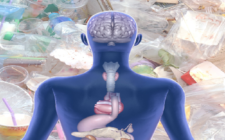General anaesthetics are a group of substances that are structurally different from each other but have in common the ability to induce a state of behaviour called general anaesthesia, which allows surgical interventions or other aggressive procedures to be carried out.
General anaesthesia, in a broad sense, can be defined as a state of drug-induced depression of the CNS, which leads to a reversible form of loss of consciousness and blockage of reactivity to painful stimuli. However, this definition is incomplete since with general anaesthesia, in addition to the loss of consciousness and insensitivity to pain, other effects are also sought, such as the blockage of somatic and vegetative reflexes, amnesia and immobilisation.
Among the usual effects produced by the administration of a general anaesthetic, the following stand out:
- Hemodynamic effects.
- Effects on the respiratory and digestive tracts.
- Hypothermia.
- Nausea and vomiting.
Traditionally, it has been used to assess the onset of anaesthesia, the differentiating phases of anaesthesia induction after the administration of ethyl ether, which classifies CNS depression into four stages:
- Stage I: From the beginning of anaesthesia to loss of consciousness.
- Stage II or excitation: From the loss of consciousness, there is an increase in activity in the CNS due to the blockade of inhibitory neurons.
- Stage III or surgical anaesthesia: Ideal stage for achieving anaesthesia. It is structured in 4 planes:
-Plan I: Conjunctival, swallowing, and pharyngeal reflexes
are inhibited.
– Plan II: Relaxation of the striated muscles and laryngeal reflex.
– Plane III: Decrease in intercostal activity, the amplitude of respiration and the light exposure reflex.
– Plan IV: Paralysis of intercostal activity, diaphragmatic contractions, and wide pupillary dilation.
- Stage IV or bulbar palsy: Coma and death (common to all general anaesthetics)
Three phases can currently be defined in general anaesthesia:
-
- Induction phase: It leads to loss of consciousness after administering fast-acting and short-acting anaesthetics.
- Maintenance phase: Intravenous or inhalation.
The mechanism of action of general anaesthetics is not yet fully elucidated since the processes they influence are mediated by numerous centres and structures, as well as a wide variety of neurotransmission systems.
General anaesthetics are classified as intravenous (thiopental, midazolam, propofol, ketamine, and etomidate) and inhalation (halothane, enflurane, isoflurane, and nitrous oxide).
- INTRAVENOUS GENERAL ANESTHETICS
- Sodium thiopental is an ultrashort-acting barbiturate whose anaesthetic effects are due to its high lipid solubility. The mechanism of action is the interaction with GABA increasing its central inhibitory effect.
- Like thiopental, propofol acts by binding to the GABA receptor, enhancing the central inhibitory effect. It produces loss of consciousness as rapidly as thiopental, but recovery is faster, with gentle awakening and little confusion on the part of the patient.
- Midazolam is a short-acting benzodiazepine that binds to the benzodiazepine receptor on the neuro-specific GABA site in the central nervous system. Midazolam produces an immediate and short-lived effect due to its rapid metabolism. It has a very fast sleep-inducing and sedative effect, with pronounced intensity. It also exerts an anxiolytic, anticonvulsant and muscle relaxant effect. Its intramuscular or intravenous administration induces anterograde amnesia.
- Ketamine is a derivative of phencyclidine. It has sometimes been used as a drug of abuse. It induces sedation, immobility, amnesia, and marked analgesia. Both analgesia and amnesia are very rapid, and after one dose, analgesia can last 40 minutes and amnesia up to two hours.
- Etomidate has a mechanism of action by binding to the GABA receptor, facilitating the movement of the neurotransmitter. It is an excellent hypnotic with a rapid onset of action, but the duration of action is short due to its fast distribution.
- INHALED GENERAL ANESTHETICS
- Halothane was introduced in 1956 and has been widely used due to its lack of flammability, ease of change in anaesthesia control and rapid awakening. However, its adverse effects and the appearance of other more modern drugs with better profile has relegated its use. However, it is still the anaesthetic in comparison with the others.
- Enflurane is used for rapid induction and maintenance of anaesthesia. Especially for care, as induction and recovery are slow. It is metabolised in the liver giving rise to fluoride. When isoniazid is taken, fluoride concentrations are very high in serum, which may represent a severe risk to the patient.
- Isoflurane is the most widely used inhalation anaesthetic worldwide. It is usually used for maintenance after inducing anaesthesia with other drugs. Although the induction of anaesthesia is faster than the previous ones, it produces more rapid changes in the depth of anaesthesia. More than 99% is eliminated unchanged by the lungs.
- Nitrous oxide is a volatile liquid; maintaining the liquid state must be at constant pressure and low temperature. The induction is very fast, and the recovery after stopping the administration is also speedy since it has slight solubility in the blood.




